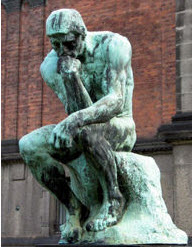 The ancient Masters
The ancient Masters
didn’t try to educate the people,
but kindly taught them to not know.
When they think that they know the answers,
people are difficult to guide.
When they know that they don’t know,
people can find their own way.
If you want to learn how to govern,
avoid being clever or rich.
The simplest pattern is the clearest.
Content with an ordinary life,
you can show all people the way
back to their own true nature.
Tao Te Ching v65
Encourage
![]()
 Christ Consciousness and Humanity
Christ Consciousness and Humanity
There are preparatory steps as individuals approach the point where they are open to transformation. But the actual transformation is not a sequential process. It is not a complicated ritual. It can occur in the twinkling of an eye. It only involves one step, one decision, one event. When it takes place, it is as easy as breathing, as simple as a smile. Suddenly, you just know; suddenly, you know on a level of certainty that precludes all knowledge. Your eyes clear, and you see for the first time what lies beyond the prison wall, and you jump. You jump into the unknown: alive, alert, aware for the first time of who you really are. When you are ready to make that leap, you will know. There will be no other choice. Suddenly you will realize that all your fears, all your problems, all your rational dilemmas, were all just part of a dream, a fiction that you had been maintaining through your own stubborn effort.
Identifying with the Being behind all Life, you realize that the particular form that you are conscious of projecting through at the moment is not really who you are. As you begin to see your body as an exquisite exploratory instrument, designed for the expression of your spirit, you begin to relax. Your preoccupation with survival begins to fall away. It is not that the body becomes unimportant, but rather that a fundamental identity shift has taken place. You are not your body. You are not your thoughts. You are not what you feel, not your role or your experience. You are the Spirit of Life itself, dancing in the clay, delighting in the glorious opportunity of in- carnation, exploring the realms of matter, blessing the Earth and all therein.
From Chapter 7 Read more . . . The Starseed Transmissions, Ken Carey
![]()
 Field of Play
Field of Play
World Series
Congratulations to the Chicago Cubs and Cleveland Indians
The World Series is the annual championship series of Major League Baseball (MLB) in North America, contested since 1903 between the American League (AL) champion team and the National League (NL) champion team. Prior to 1969, the team with the best regular season win-loss record in each league automatically advanced to the World Series; since then each league has conducted a championship series (ALCS and NLCS) preceding the World Series to determine which teams will advance. As of 2015, the World Series has been contested 111 times, with the AL winning 64 and the NL winning 47. The winner of the World Series championship is determined through a best-of-seven playoff, and the winning team is awarded the Commissioner’s Trophy. As the series is played in October (and occasionally November), during the autumn season in North America, it is often referred to as the Fall Classic.
Read more . . .
![]()
 The American Presidency
The American Presidency
How Did We Get Here?
This year’s Presidential election is one of the most significant in our nation’s history. It’s also—let’s be honest—riveting television. The candidates may be the stars of the show, but they aren’t the only ones competing: anchors, reporters, and commentators are also doing their best to surprise, captivate, and inform us. Sometimes, the spectacle is almost too entertaining, and a momentous election can feel a bit too much like reality TV.
How did we get here? This week, we bring you pieces that, collectively, chart the history of broadcast news. Each piece looks at a figure who has shaped the medium. Charles Wertenbaker profiles Edward R. Murrow, one of the format’s early crusaders. Louis Menand reassesses Walter Cronkite and the “golden age” of TV news. E. J. Kahn, Jr., goes behind the scenes of “60 Minutes” with its creator, Don Hewitt, and examines how correspondents like Mike Wallace and Ed Bradley created the show’s widely imitated formula. Nicholas Lemann explores how Barbara Walters made entertainment into news, and vice versa. Ken Auletta chronicles the rise of Diane Sawyer, who kick-started the competition among networks for dynamic female broadcasters. Jane Mayer shows how David Koch and other conservative activists are trying to change public television. Finally, in a Profile of Roger Ailes, written shortly after the founding of Fox News—and years before he would depart the network after allegations of sexual harassment—Auletta examines the creation of a media empire that has transformed not just American news but national politics. Today’s news networks are shaping how we view this election. Here’s the history that shaped them.
—Erin Overbey and Joshua Rothman, archivists
Read more . . .
